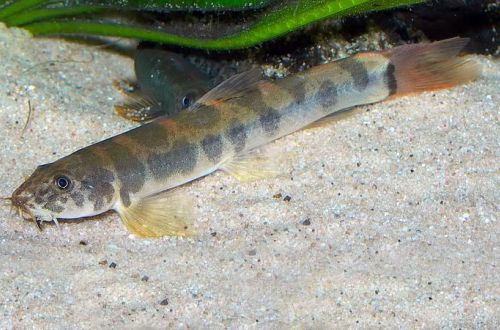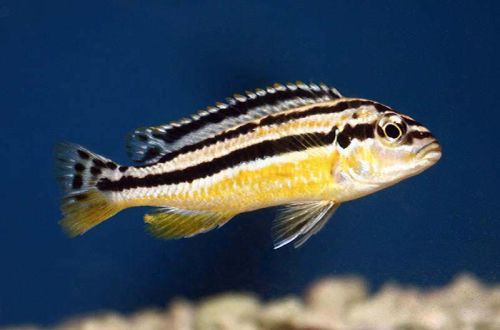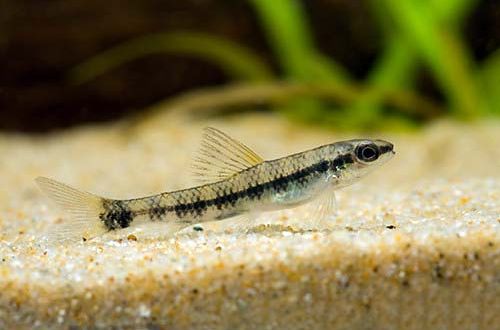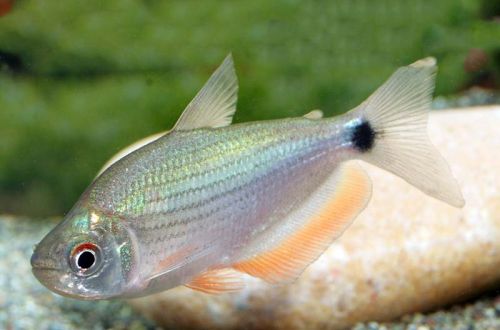
Shistura spotted
Spotted schistura, scientific name Schistura spilota, belongs to the Nemacheilidae family. A rare guest in amateur aquarism. Since 2016 it has been available for sale on a regular basis, before that it appeared periodically in deliveries with other chars. It is easy to keep, but not very friendly in disposition, which limits the choice of compatible species.

Contents
Habitat
It comes from Southeast Asia from the territory of the northwestern part of Thailand. The natural habitat is limited to the basin of the Mae Nam Ping River (Ping River) in Chiang Mai Province. The river flows through mountainous terrain, the current changes from measured to stormy with numerous cascades and rapids. Substrates consist of sand, stones, boulders, snags. Aquatic vegetation grows mainly along the coast.
Brief information:
- The volume of the aquarium – from 100 liters.
- Temperature – 20-26°C
- Value pH — 6.0–7.5
- Water hardness – soft to medium hard (2-12 dGH)
- Substrate type — stony
- Lighting – subdued or moderate
- Brackish water – no
- Water movement – moderate or strong
- The size of the fish is 9–10 cm.
- Food – any sinking food
- Temperament – inhospitable
- Content alone or in a group
Description
Adults reach a length of 9–10 cm. The body is long and more like eels in structure. The head is small, antennae are located near the mouth, helping to search for food in the crevices between the stones. The fins are short. The ventral and pectoral fins are pale yellow in color and are shifted down and act as limbs on which the fish rests against the bottom. The tail is also modest in size, red, with a black stripe at the base. The body pattern consists of large dark gray spots on a lighter background, some of the spots become rounded on the sides of the body. Sexual dimorphism is weakly expressed. Males have enlarged “cheeks” when viewed from above.
Food
In nature, they feed on small insects, worms, crustaceans and other zooplankton. In the home aquarium, dry food of the appropriate size will be accepted. However, you should not be limited only to them. Live or frozen brine shrimp, bloodworms and similar products will be a useful addition.
Maintenance and care, arrangement of the aquarium
The optimal size of the aquarium for 3-4 fish starts from 100 liters. The maintenance of Spotted Shistur is quite simple, subject to a number of requirements: clean water, rich in oxygen, and a moderate current. These tasks are solved simply – by installing productive internal filters, regularly updating part of the water (30-50% of the volume) with fresh water and timely removal of organic waste. In the design, it is enough to use sandy or rocky soil with heaps of stones and snags. If desired, artificial plants are added, or living vegetation from among unpretentious species that can grow on a woody surface and withstand strong currents. For example, anubias, bucephalandra, krinum, some types of aquatic mosses and ferns.
Behavior and Compatibility
Not the friendliest fish. They are very territorial and will become hostile to other benthic species. As neighbors, you should choose only mobile fish that live in the water column or near the surface, such as zebrafish, barbs and others. To avoid conflicts within the group, it is necessary to provide enough space and shelter for each individual.
Breeding / breeding
At the time of preparation of the materials, the authors did not find reliable information on successful cases of breeding Chistrua spotted in the artificial environment of home aquaria.
Fish diseases
Health problems arise only in case of injuries or when kept in unsuitable conditions, which depresses the immune system and, as a result, provokes the occurrence of any disease. In the event of the appearance of the first symptoms, first of all, it is necessary to check the water for the excess of certain indicators or the presence of dangerous concentrations of toxic substances (nitrites, nitrates, ammonium, etc.). If deviations are found, bring all values back to normal and only then proceed with treatment. Read more about symptoms and treatments in the Aquarium Fish Diseases section.





